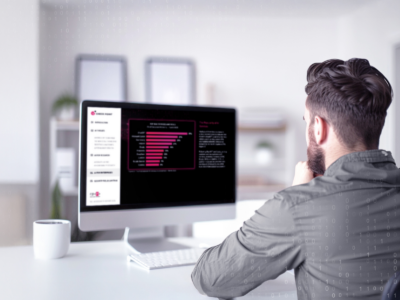
Cybersecurity Readiness for the Post-Pandemic Enterprise
Enabling a safe, secure, and convenient digital workplace – Register for the Upcoming Webinar Here
In our recent release of Check Point Software’s 2021 Cyber Security Report, we show how hackers and criminals have exploited the COVID-19 pandemic in 2020 to successfully target and attack all business sectors. Highlights of our coverage include:
 Remote working increasingly being targeted: Hackers ramped up ‘thread hijacking’ attacks on remote workers to steal data or infiltrate networks.
Remote working increasingly being targeted: Hackers ramped up ‘thread hijacking’ attacks on remote workers to steal data or infiltrate networks.- Cloud adoption racing ahead of security: Public cloud security is still a major concern for 75% of enterprises. Cloud security problems will continue into 2021.
- Double-extortion ransomware attacks rising: On average, a new organization becomes a victim of ransomware every 10 seconds worldwide.
- Attacks on the healthcare sector becoming an epidemic: in Q4 2020, CPR reported that cyber-attacks on hospitals had increased by 45% worldwide.
- Mobiles are now moving targets: 46% of organizations had at least one employee download a malicious mobile application.
We saw very quickly and clearly how the months of sustained lockdowns didn’t stop digital transformation. Instead, they accelerated it. Today, workplaces are already leveraging various types of smart, connected devices. But as the imminent return to the workplace quickly approaches, these devices will play prominent new roles that deliver healthier, safer, and more convenient experiences in our post-pandemic world. For example:
- Health & Safety: People are now, more than ever, hyper-aware of disease transmission and cautious of touching shared surfaces, which is quickly validated by the amount of hand-sanitizer bottles you see at your everyday brick and mortar shops. This is driving organizations to reassess employee and customer experiences – e.g. focusing on new technologies, like voice interfaces, facial recognition, and mobile applications. Data provided by sensors and building management systems will feed predictive analytics for everything from sanitation and janitorial services to air treatment and building occupancy. And GPS, beacons, and location services will continue to play an important role in contact tracing for today’s exposures, and those we’ve yet to encounter.
- Convenience: Employees will also expect a seamless transition between their homes, offices, and field environments. Desk hoteling with docking stations for work laptops alongside open Wi-Fi connectivity for personal portable devices will help them bring the conveniences they’ve enjoyed while working from home with them to the workplace. Voice-activated systems and digital assistants will enable hands-free experiences for everything from brewing coffee to starting video calls in a conference room.
- Security: Nonetheless, with all the benefits these innovative devices deliver, including new and important experiences, one can’t ignore the inherent vulnerabilities they possess. A large majority of these devices get pushed to market quickly due to the competitive nature of the market. This means security is often overlooked or simply included simply to check off a box. More often than not IoT/OT devices possess no native security controls, have an inability to host agents, and are difficult or impossible to update/patch. Their proliferation throughout the workplace adds a new layer of complexity for IT and security teams tasked with knowing what devices exist across the workplace so they can protect them from cyberattacks.
Join our upcoming webinar which will provide you with a blueprint for cybersecurity readiness in a post-pandemic workplace, including practical steps you can start preparing for the re-entry of your employees and the devices they’ll bring with them to the office.
Webinar Details
“Cybersecurity Readiness for the Post-Pandemic Enterprise” with Itzik Feiglevitch (Sr. Product Manager, IoT Security at Check Point) and Steve Poeppe (VP Solution Architects at Armis)
May 27th, 2021 @ 9:00 AM PT – Register Now






 Remote working increasingly being targeted: Hackers ramped up ‘thread hijacking’ attacks on remote workers to steal data or infiltrate networks.
Remote working increasingly being targeted: Hackers ramped up ‘thread hijacking’ attacks on remote workers to steal data or infiltrate networks.


